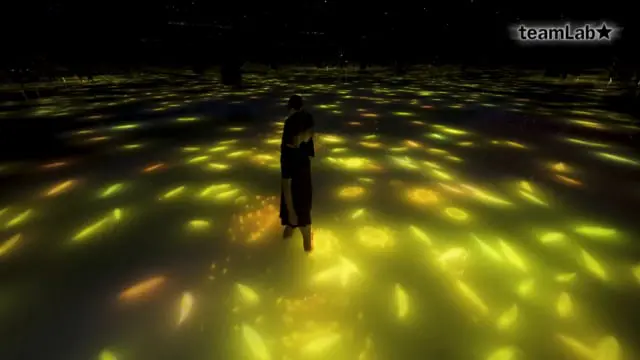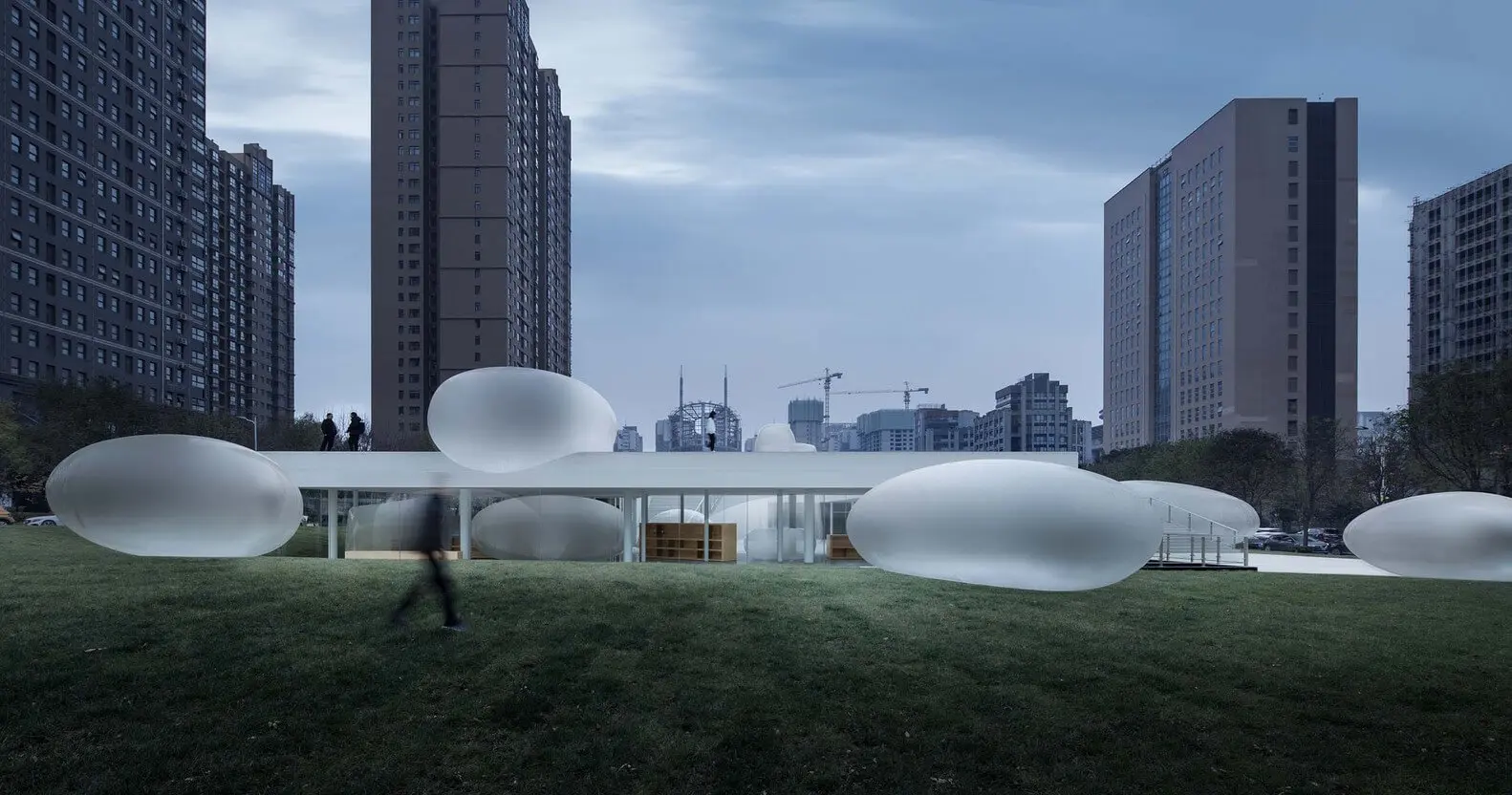Existence is beauty, your existence is beautiful – Through the vision & words of teamLab
teamLab is definitely leading the way in defining the essence of immersive art installations completed with deep reflections on human nature.

teamLab absorbs us in immersive environments where visitors are part artwork, part spectator. But what is behind these aesthetic experiences and dazzling views? Why these surreal scenarios? We dared to ask, and we did well.
It’s since 2018 that we hear the word “immersive” used to describe 2 out of 3 design installations. There is nothing wrong with striving for great results, but there is everything wrong in abusing a term to the point that it gets so diluted to lose meaning and become so waterish that you can finally immerse yourself into it.
But ahead of many followers, there is always a great leader (or at least it should be): teamLab is definitely leading the way in defining the essence of immersive art installations completed with deep reflections on human nature.
Through the aid of technology and dream-like scenarios, the audience is entirely abducted: the collective grants us access to mesmerizing worlds not only to observe beauty but to also become part of it and furthermore reflect on its meaning for mankind.

How did the journey of teamLab begin? When did the international art collective start?
teamLab:
“teamLab was founded in 2001 by Toshiyuki Inoko and several of his friends to create a “laboratory to experiment in collaborative creation”, i.e. “teamLab”. teamLab’s interest is to create new experiences through art, and through such experiences, we want to explore what the world is for humans.
teamLab has been creating art since the beginning. Our aim has always been to change people’s standards of value and contribute to societal progress – this has not changed since the very start.
In the beginning, teamLab had neither the opportunity to present ourselves, nor could we imagine how to economically sustain our art creation. On the other hand, we believed in the power of digital technology and creativity, and thus kept creating something new, no matter which genre it would turn out to be.
While we took part in various projects to sustain ourselves, we increased the number of technologists such as architects, CG animators, painters, mathematicians and hardware engineers.”

As time went on, while teamLab gained passionate followers among young people, we were still ignored by the art world. Our debut finally came in 2011 at the Kaikai Kiki Gallery in Taipei, as we were invited by the artist Takashi Murakami. Since then, teamLab has gained opportunities to join major contemporary art exhibitions in cosmopolitan cities such as Singapore Biennale 2013.
In 2014, New York PACE Gallery started to help promote teamLab artworks. These fortunate factors allowed teamLab to expand rapidly. Finally in 2015, we were able to organize our own exhibition for the first time in Tokyo. These situations further accelerated our evolution and gave us opportunities to exhibit internationally in New York, London, Paris, Singapore, Silicon Valley, Beijing, Taipei, and Melbourne among other cities.”

Why focus on immersive art installations?
teamLab:
“Our artwork is participatory by making it interactive. Video games, smartphones, and the internet are all interactive when you involve yourself intentionally. However, what teamLab focuses on is connecting interactiveness with art. A type of interactivity we pursue is one in which your presence transforms the work, whether or not you intend to do so. If you find a change caused by someone else to be beautiful, that person’s presence may become beautiful as well.
Types of art we have seen so far often find the presence of other viewers more of an obstruction. You feel very lucky if you happen to be alone at an exhibition. But what teamLab aims to do is to be able to feel the presence of others as something more beautiful than ever before.”
This concept also applies to the cities we live in. In modern cities, the presence of others is not the most pleasant thing. You cannot understand nor control them. You have to tolerate and accept them. That’s because the city doesn’t transform due to the presence of you or others. If the entire city were to be digitized using teamLab’s type of art, the presence of others could become something positive, even in big cities.
It may seem obvious that there are no clear boundaries in the world naturally. However, when you’re in a city, the world seems full of boundaries, giving the illusion that boundaries have always existed. For instance, the earth and the heavens are completely different phenomena, but there is no actual boundary between them. Independence and boundaries may seem to be unrelated at first glance; however, people believe that boundaries are essential to the idea of independence.”

If you go to a rich and abundant forest, you will see diverse individual lives and species surviving in interconnected relationships. Seeing that, people will understand the ambiguity of boundaries in the natural world.
And even us humans can only exist as a part of this massive interconnected continuity. However, as this continuity becomes more and more complicated, it becomes harder for us to physically perceive and understand our own bodies’ part in it.
We want people to be involved with the world. As much as possible, we want to re-think the boundary between the world and oneself. Living in the city, you feel as if there is a border between yourself and the world. But the world is something we should be involved in. It may be just a bit, but the world is something that changes due to your existence. We believe that there is a borderless, continuous relationship between us and the world.”
Due to the current pandemic crisis, a lot of activities are forced to shift from the physical to the digital world. With your installation being a mesmerizing balance between physical and digital environments, do you think that the digital can prevail and substitute the physical? How do you perceive these two realms?
teamLab:
“Technology is just a tool, just like paint. Although it’s a tool, it does affect greatly on the creation, just like how the Western landscape painting has developed because it became possible to bring paints outdoors. We could say that technology is the core of our work, but it is not the most important part. It is still just a material or a tool for creating art.
We have been creating art using digital technology since the year 2001 with the aim of changing people’s values and contributing to societal progress. Although we initially had no idea where we could exhibit our art or how we could support the team financially, we also strongly believed in and were genuinely interested in the power of digital technology and creativity. We wanted to keep creating new things regardless of genre limitations, and we did.

Digital technology allows artistic expression to be released from the material world, gaining the ability to change form freely. The environments where viewers and artworks are placed together allow us to decide how to express those changes.
In art installations with the viewers on one side and interactive artworks on the other, the artworks themselves undergo changes caused by the presence and behavior of the viewers. This has the effect of blurring the boundary lines between the two sides. The viewers actually become part of the artworks themselves. The relationship between the artwork and the individual then becomes a relationship between the artwork and the group.
Whether or not another viewer was present within that space five minutes before, or the particular behavior exhibited by the person next to you suddenly becomes an element of great importance. At the very least, compared to traditional art viewing, people will become more aware of those around them. Art now has the ability to influence the relationship between the people standing in front of the artworks.
teamLab’s art aims to expand physical space and the relationships of viewers within that space. teamLab believes that the “experience” cannot be cut out of our art.
Through smartphones or TVs, two-dimensional screens, people can understand only with their heads. Knowledge may be gained, but the sense of values and perceptions cannot be changed or broadened. Only through the actual, physical experience of the world or artworks, people can start to recognize things differently. Even if people look at teamLab exhibition images on Instagram, their values will not be broadened.
teamLab wants to continue creating experiences that cannot be shared with just photos or videos.

What teamLab wants to do is to enhance the physical space itself using art. It doesn’t necessarily have to be yourself that intervenes with it. It can be other people or a group of people that vaguely includes you. And instead of personal use, we want to make it usable by multiple people.
By digitizing the space, we can indirectly change the relationships between people inside. If the presence of others can trigger the space to change, they’d become a part of the artwork. And if that change is beautiful, the presence of others can be something beautiful as well. By connecting digital technology and art, we think the presence of others can be made more positive.
In the near future, we want to have large, experiential spaces around the world, so this challenging period can be seen positively as a time for teamLab to prepare for this future. We are thinking positively: once the coronavirus situation has passed, we hope to increase the number of places where people can experience teamLab’s art.”

teamLab is an art collective, and creating art is everything to us. So even while our museums in Tokyo are temporarily closed, we can focus on creating artworks for Macao and other upcoming exhibitions.
And although it is yet undecided when our Tokyo museums will reopen, our museum in Shanghai has already started welcoming visitors again as of March 27, so we are hopeful for the future. teamLab aims to explore a new relationship between humans and the world through digital art.
When we look at the world through an intellectual lens, problems are overflowing. And when you see the problems that we cannot solve, you just feel hopeless. In this era, we think what’s more important, at least as an artist, is to seek out and affirm an idealistic part of humanity, and present an idea of the future.
We’re not talking about a simple fiction of manga or video games, but instead, it’s an ideal fictitious world that may be realized somewhat. There are problems that cannot be solved at this very moment. But what we can do is to suggest that we may be able to create an ideal world once more by connecting the hints that can be found in the long history of humanity. We just find it more important to create the world than to criticize the world.”
With art being the communication engine that it is, what is the message teamLab wants to convey through their works?
teamLab:
“We want people to be involved with the world. As much as possible, we want to re-think the boundary between the world and oneself. Living in the city, you feel as if there is a border between yourself and the world, but the world really is something with which we are meant to involve ourselves. It may be just a bit, but the world is something that changes due to your existence. We believe that there is a borderless, continuous relationship between us and the world.
In other words, we want to create an experience that turns the existence of unrelated others into something positive.
We want to create an experience where the relationship between the world and the self is borderless and continuous. There is no perfect boundary between people, but rather, it is ambiguous and connected, even if the person is unrelated to you.

Our intention is to change people’s standard of beauty, even if it requires a great deal of time. At some point in history, humans saw flowers and thought “beautiful.” But we do not really understand this phenomena of “beauty.” Evolution explains some instances: it is natural that we would perceive other humans to be “beautiful” from a reproductive standpoint.
But this does not explain why humans have found flowers “beautiful.” In the time before civilization, people did not see beauty in something as insignificant as flowers. In other words, we humans attributed the same idea of “beautiful” to targets for reproduction as well as to unrelated things like flowers. In theory, we should have used different words for these two completely unrelated concepts, so the fact that we conceive of them in the same way is quite miraculous.

We believe that art is an act of modern people creating their own flowers and expanding the notion of “beautiful” with those flowers, just in the way that ancient human beings saw flowers as “beautiful” and expanded the idea of beauty. We do not instantly understand the reasons or meaning behind this expansion. However, through these positive expansions of “beautiful,” 30 or 50 years later, people may behave differently in a way that we cannot understand with today’s limited knowledge, allowing humanity to continue to grow and thrive.
We hope to change people’s standard of beauty which, as a consequence, may change people’s behavior little by little unconsciously in 10 or 50 years. One characteristic of interactive art is that the existence and behavior of the viewer can influence the art, thereby blurring the line between art and viewer.
In other words, the artistic work is made up of both the art and the viewer. One consequence of this is a shift in the relationship between art and viewer as well as between the individual viewer and the group. Factors such as whether there were any viewers that saw the work five minutes before you did, or what the viewer next to you is currently doing, suddenly become important.”
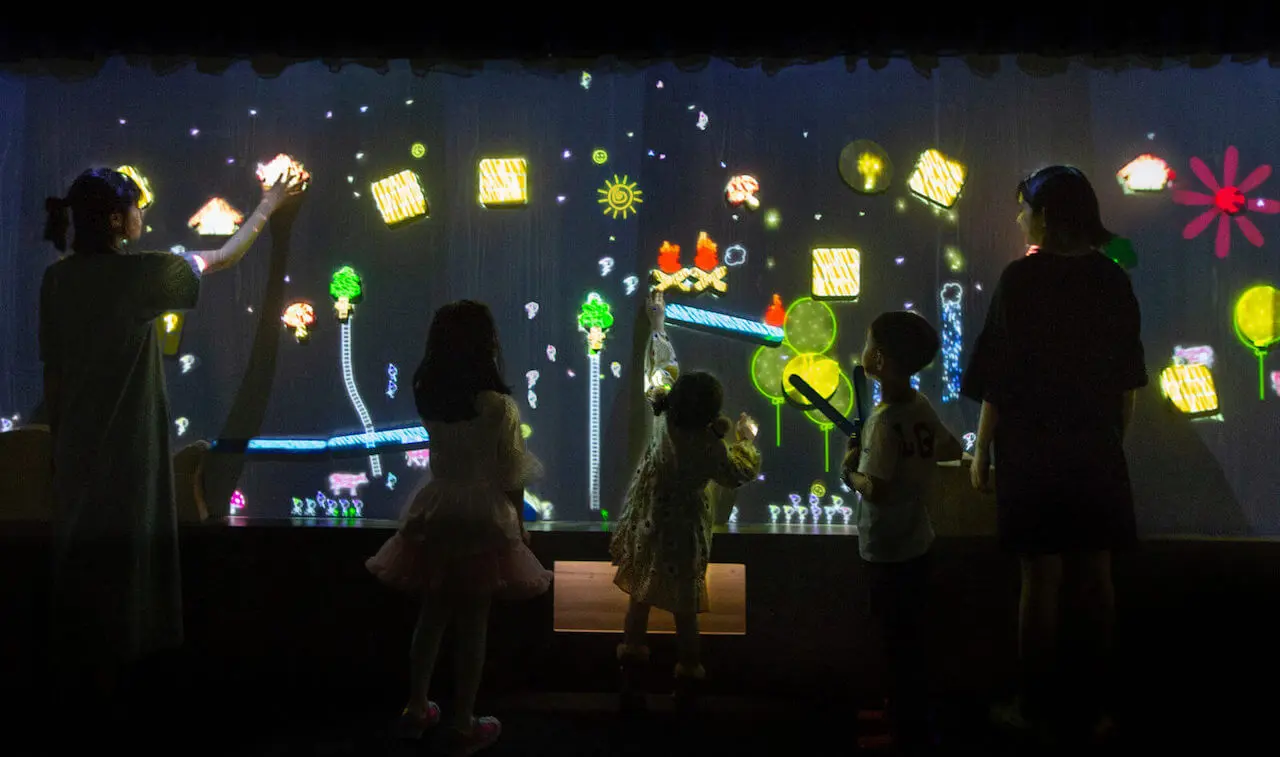
At a minimum, our interactive installations call more attention to the actions of the viewers around you than would a traditional painting. The result is that the art gains the ability to influence the relationships between the viewers standing in front of it. And if the effect of another person’s presence on the art is beautiful, it is possible that that person’s presence itself will be seen as beautiful.
The paradigm in traditional art has been to treat the existence of other viewers as a nuisance. If you are at an exhibition with no other viewers, for example, you are likely to think of yourself as extremely lucky. But in the exhibitions put together by teamLab, we encourage people to think of the presence of other viewers as a positive factor.”
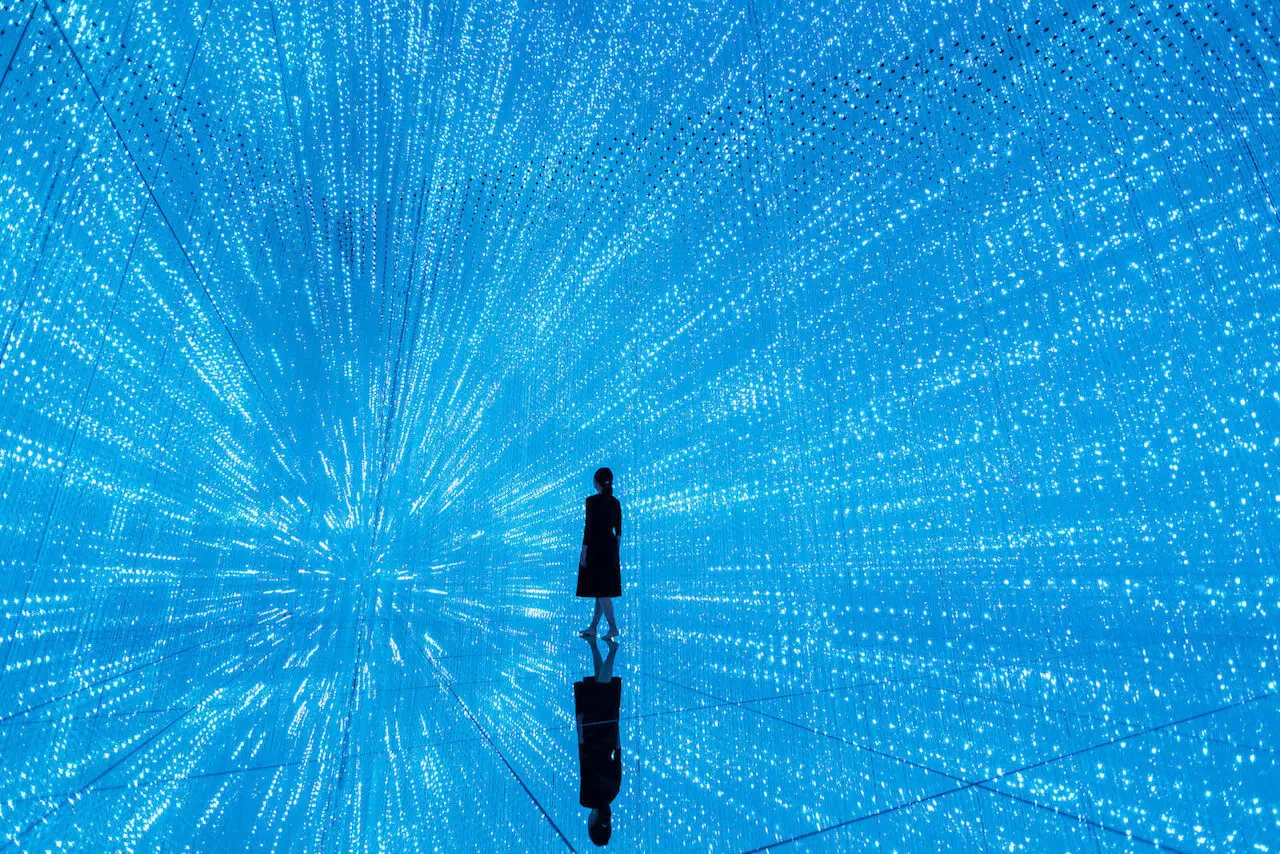
Your work is displayed around the world, which is a clear testament to the success and universality of your art. What reactions or feedback do you receive when people experience your creations? And do you study or are influenced by such reactions?
teamLab:
“teamLab aims to explore a new relationship between humans and nature through art. Digital technology has allowed us to liberate art from the physical and transcend boundaries. We see no boundary between ourselves and nature; one is in the other and the other in one. Everything exists in a very long, fragile yet miraculous continuity of life.
The motivation for our creation comes from our own interest. And what we are interested in is to explore what the world is for humans, and to pursue new relationships between humans and nature.
We are not always present at our exhibitions but we always hope that surprising things happen at the venue. This is especially because our interactive artworks encourage viewer participation. Common interactive media, such as video games, PCs, smartphones, internet applications, and the like, involve people who purposely wish to interact directly with the world, actually intervening and executing some functions in order to do so.

However, we focus much more on interactivity and linking with art, regardless of whether the viewer purposely wishes to intervene and execute some actions. Art is changed simply by the mere existence of another person. In addition, if the change caused by the existence of that person looks beautiful, then the existence of that person also becomes beautiful.
At the very least, with the type of art that we have experienced up until now, the presence of other viewers constituted more of a hindrance than anything else. If you found yourself alone at an exhibition, you would consider yourself to be very lucky. However, teamLab’s exhibitions are different from the artworks showcased so far; the existence of other viewers is definitely seen as a positive element.”

If you could collaborate with any artist, designer or architect, who would you like to work with on your next project?
teamLab:
“The collaboration itself is very important to us, and whether or not our collaborators also seek to manifest social change through art. We welcome collaboration with any partner that wishes to improve the lives of people with immersive installations.
What is most important to us is collaborating with people who envision the same kind of future as we do.”

What is the next step for teamLab?
teamLab:
“Our new project at the Venetian Macao is the permanent “body immersive” museum called teamLab SuperNature Macao. It is located at Cotai Expo Hall F, The Venetian Macao, and the official website is macao.teamlab.art.
We have had to postpone the opening due to the coronavirus outbreak, but we are very excited to launch this museum when the situation has improved.
teamLab SuperNature will be a single, massive world comprised of works by art collective teamLab that aim to explore new perceptions of the world and the continuity between humans and nature. It will be a “body immersive” museum centered around a group of works that blur the boundaries between people’s bodies and art.

In teamLab SuperNature, people will immerse their bodies in art with others, influencing and becoming a part of the artworks themselves. People become one with the art, blurring their perception of the boundaries between the body and the artwork, and thereby recognizing the continuity between the self and the world.
teamLab SuperNature will also have new, unprecedented, and immersive “Future Park” and “Athletics Forest” areas. “Future Park” is an educational project based on the concept of collaborative creation or co-creation. It is an amusement park where visitors can enjoy creating the world freely with others.

“Athletics Forest” is a new “creative athletic space” that helps train spatial awareness. It is a space that develops the body as well as the brain based on the concept of “understanding the world through the body and thinking of the three-dimensionality of the world”. We hope that these experiences will give people the opportunity to gain new insight and recognition of the continuity between ourselves and the world.
There are two (2) major new artworks to debut at teamLab SuperNature. One is called Massless Clouds Between Sculpture and Life, which has undergone numerous experimentations at the warehouse in Tokyo.”
A giant cloud floats between the floor and the ceiling within the confines of the space, as though transcending the concept of mass. People can immerse their bodies in this cloud, blurring the boundaries between the artwork and the body.
Even when people push through the floating cloud and break it, it naturally repairs itself like a living thing. But, as with living things, when the cloud is destroyed beyond what it can repair, it cannot mend itself, and it collapses.
What is life? What separates the “living” from “inanimate” cannot be defined biologically to this day. That you continue to be tomorrow who you are today is against the “law of increasing entropy” wherein tangible things collapse. Entropy (a measurement of the lack of order in a system) is being maximized in this universe, but life goes against this direction.

Physicist and 1977 winner of the Nobel Prize in Chemistry, Ilya Prigogine, observed that in the natural world when energy is absorbed from an external source, internal entropy is generated, then released. Prigogine discovered that there exists a non-equilibrium state that is only realized when this entropy is released.
Prigogine proposed this general idea of “dissipative structures,” and defined “self-organization” as the phenomenon of order being spontaneously realized in such dissipative structures. Through the dissipation of energy (or matter) and the removal of entropy outside of the system, internal entropy is reduced and order is realized.
Living creatures take in energy from the outside in the form of food, disposing of entropy in the form of excrement, thereby preserving entropy. The phenomenon of life can be thought of as a sort of dissipative structure: living by constantly lowering entropy, self-organizing, and maintaining order. Therefore, life can never be considered separate from its environment. Life cannot exist independently, it is part of a continuity with its external surroundings.
In this artwork, self-organization is tested. Universal gravitation and centrifugal force are opposed, and the clouds rotate while floating in the space between the floor and ceiling. And, just like life, they endeavor to repair themselves.”
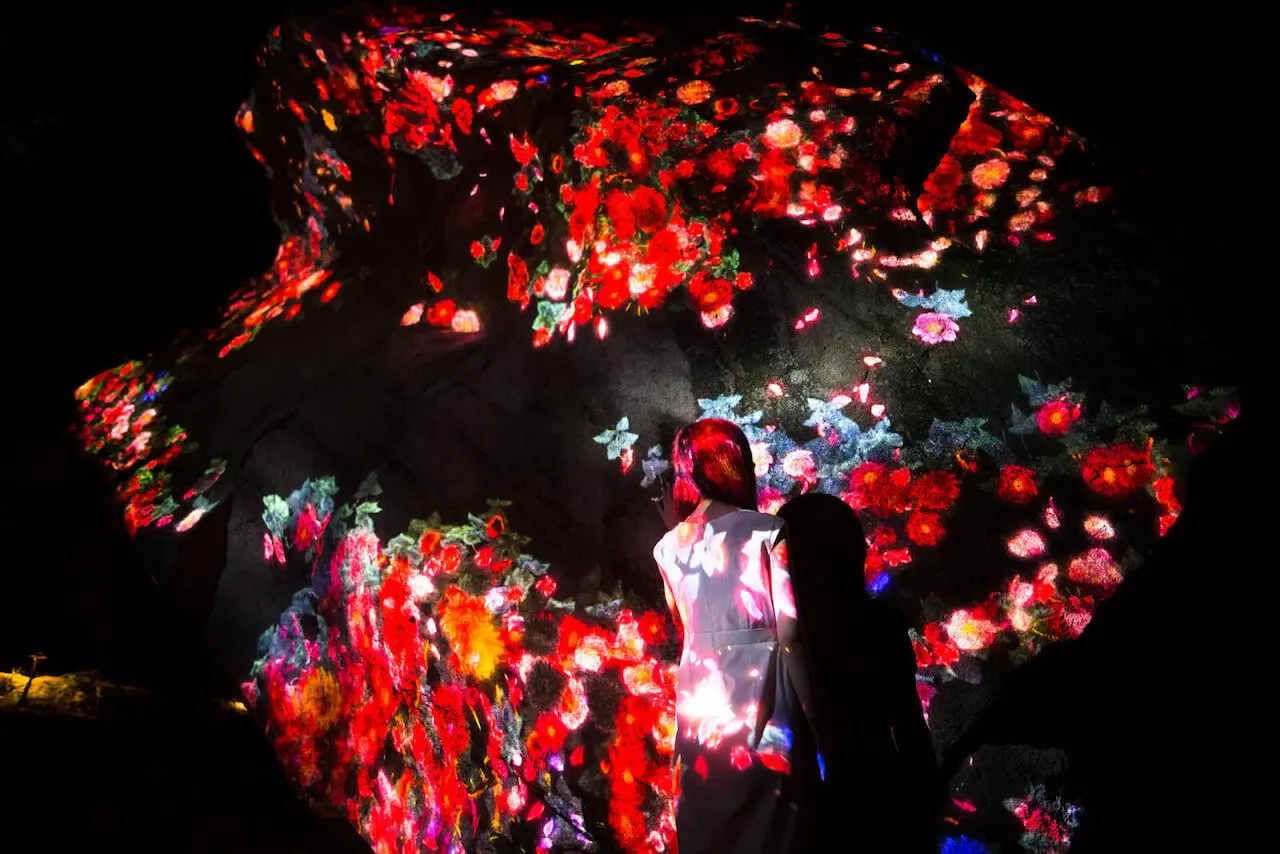
Another work is the as of yet untitled new piece. It is an installation that creates a three-dimensional object or light sculpture by a plane made of a collection of laser rays of light.”
In addition, we hope to return to Mifuneyama Rakuen again this year for our annual outdoor exhibition in the real nature of Kyushu: teamLab: A Forest Where Gods Live.
The 500,000 square meter Mifuneyama Rakuen Park was created in 1845, during the end of the Edo period. Sitting on the borderline of the park is the famous 3,000-year-old sacred Okusu tree of Takeo Shrine. Also in the heart of the garden is another 300-year-old sacred tree. Knowing the significance of this, our forebears turned a portion of this forest into a garden, utilizing the trees of the natural forest.
The border between the garden and the wild forest is ambiguous, and when wandering through the garden, before they know it, people will find themselves entering the woods and animal trails. Enshrined in the forest is the Inari Daimyojin deity surrounded by a collection of boulders almost supernatural in their formation. 1,300 years ago, the famous priest Gyoki came to Mifuneyama and carved 500 Arhats. Within the forest caves, there are Buddha Figures that Gyoki directly carved into the rock face that still remain today.”

The forest, rocks, and caves of Mifuneyama Rakuen have formed over a long time, and people in every age have sought meaning in them over the millennia. The park that we know today sits on top of this history. It is the ongoing relationship between nature and humans that has made the border between the forest and garden ambiguous, keeping this cultural heritage beautiful and pleasing.
Lost in nature, where the boundaries between man-made garden and forest are unclear, we are able to feel like we exist in a continuous, borderless relationship between nature and humans. It is for this reason that teamLab decided to create an exhibition in this vast, labyrinthine space, so that people will become lost and immersed in the exhibition and in nature.
We exist as a part of an eternal continuity of life and death, a process which has been continuing for an overwhelmingly long time. It is hard for us, however, to sense this in our everyday lives, perhaps because humans cannot easily conceptualize time for periods longer than their own lives. There is a boundary in our understanding of the continuity of time.

When exploring the forest, the shapes of the giant rocks, caves, and the forest allow us to better perceive and understand that overwhelmingly long time over which it all was formed. These forms can transcend the boundaries of our understanding of the continuity of time.
teamLab’s project, Digitized Nature, explores how nature can become art. The concept of the project is that non-material digital technology can turn nature into art without harming it.
These artworks explore how the forms of the giant rocks, caves, forests, or the garden where nature has continually existed in contact with the lives of people, make it possible to create a place where we can transcend the boundary in our understanding of the continuity of time and feel the long, long continuity of life. The works encourage once again the contemplation of the meaning of “Continuous Life” that has existed over many years in Mifuneyama.”










